Hey everyone, Henry Duy here!
If you’re looking to start an online store without the hassle of managing inventory, you’ve likely come across two popular business models: dropshipping and print on demand.
Both offer fantastic ways to sell products online without stocking a single item, but they operate differently and suit different goals.
Choosing between dropshipping vs print on demand is a critical first step, so let’s break down everything you need to know.
In this post, we’ll dive deep into what each model entails, compare them head-to-head, and help you figure out which path might be the best fit for your entrepreneurial journey.
What is Dropshipping?

At its core, dropshipping is a retail fulfillment method where a store doesn’t keep the products it sells in stock. Instead, when the store sells a product, it purchases the item from a third-party supplier (like a manufacturer, wholesaler, or another retailer) and has it shipped directly to the customer.
How it works:
- You set up an online store and list products from a dropshipping supplier.
- A customer places an order in your store.
- You receive the order and the customer’s payment.
- You forward the order details and shipping address to your supplier.
- You pay the supplier the wholesale price for the item (keeping the difference as profit).
- The supplier packs and ships the product directly to your customer.
Pros of Dropshipping:
- Low Startup Costs: You don’t need to buy inventory upfront.
- Wide Product Variety: Access to millions of products across countless niches, often found via platforms like AliExpress.
- Flexible Location: You can run your business from anywhere with an internet connection.
- Scalability: It’s relatively easy to scale up or down based on demand without worrying about excess stock.
- Easy to Start: The barrier to entry is quite low.
Cons of Dropshipping:
- Lower Profit Margins: Competition can drive prices down, and suppliers take a cut.
- Inventory Issues: You don’t control inventory, so stockouts or delays from suppliers can happen.
- Shipping Complexities: Dealing with potentially long shipping times (especially from international suppliers) and managing shipping costs from multiple suppliers can be tricky.
- Supplier Reliability: Finding trustworthy and consistent suppliers is crucial, but can be challenging.
- Quality Control: You never see the product, making quality control difficult.
What is Print on Demand (POD)?

Print on Demand is a variation of dropshipping, specifically focused on customizable products. With POD, you partner with a supplier who prints your custom designs (like logos, artwork, or text) onto products (like t-shirts, mugs, posters, phone cases) only when an order is placed.
How it works:
- You create designs and upload them to a Print on Demand platform (like Printful, Printify, Gelato, Qikink).
- You choose products from their catalog and apply your designs to create unique mockups for your store.
- You list these custom products on your online store.
- A customer orders a product from your store.
- You receive the order and payment.
- The order is automatically (or manually) sent to your POD provider.
- You pay the POD provider for the product and the printing service.
- The POD provider prints your design onto the product, packages it, and ships it directly to your customer, often under your brand’s label.
Pros of Print on Demand:
- Low Startup Costs: Similar to dropshipping, no upfront inventory purchase is required.
- Customization & Branding: You sell unique products that you design, allowing for strong branding.
- Focus on Niche: Easily cater to specific interests, hobbies, or communities with tailored designs.
- Inventory Management is Zero: Products are created only after an order is placed.
- Simpler Shipping (often): POD providers handle production and shipping, often with tracking.
- Quality Control Potential: While you don’t handle products, many reputable POD providers offer samples for quality checks.
Cons of Print on Demand:
- Limited Product Range (Compared to general dropshipping): You’re limited to the catalog offered by your POD provider(s).
- Higher Product Costs: The base cost per item is typically higher than bulk wholesale prices due to individual production.
- Dependency on Provider: Your product quality, production speed, and shipping efficiency depend entirely on your POD partner.
- Design Effort: You need to create or source unique designs, which takes time and potential investment.
- Shipping Costs: Can sometimes be higher for individual items compared to bulk shipping.
Dropshipping vs Print on Demand: A Direct Comparison

Now let’s put dropshipping vs print on demand side-by-side on key factors, including what they have in common:
| Feature | Dropshipping (General) | Print on Demand (POD) |
| Similarities | No inventory required by the seller. Fulfillment handled by a third party. Low startup costs. Can be run from anywhere. Highly scalable. | |
| Product Range | Extremely Broad (electronics, clothing, home goods, etc.) | Limited to products the provider offers (mostly apparel, home goods, accessories) |
| Customization | None (usually sell generic products) | High (you add unique designs) |
| Branding | Minimal (can add custom packaging/notes if supplier allows) | Stronger (your designs, custom labels/packing slips often available) |
| Profit Margins | Can be thin due to competition/lower prices | Can be higher per item due to uniqueness, but base cost is higher |
| Shipping | Can be complex (multiple suppliers, long times) | Generally simpler (provider handles), but costs vary |
| Quality Control | Difficult to ensure consistently | Easier to test with samples from a specific provider |
| Effort Focus | Finding winning products, marketing, supplier relations | Creating designs, choosing products, marketing |
When looking at print on demand vs dropshipping, think about what kind of business you want to build. Are you focused on finding trending generic products quickly and selling them widely? Or do you want to build a brand around unique, customizable items?
Let’s consider the two models from the perspective of control and creativity – POD offers more in the design realm.
Another angle when comparing print on demand vs dropshipping is supplier relationships; with POD, you typically have one main provider for a range of products, while general dropshipping might involve many.
Thinking about scalability, both are highly scalable, but the reliance on production capacity is slightly different.
Who is Dropshipping For?
General dropshipping is often ideal for:
- Beginners looking to test the e-commerce waters with minimal risk.
- Entrepreneurs who want to explore many different product niches without commitment.
- Marketers skilled at finding trending products and driving traffic.
- Those looking for the absolute widest range of products.
If, after reviewing the pros and cons and considering whether dropshipping aligns with your strengths, you feel this model is a good fit, you’ll naturally want to know how to turn it into a successful and profitable venture. It takes more than just finding products; strategy is key.
For a detailed guide on building a successful business with this model, you might find my article on How to Make a Profitable Dropshipping Business very helpful.
Who is Print on Demand For?
Print on demand often appeals more to:
- Artists, Designers, and Creators who want to monetize their work.
- Niche Enthusiasts building a brand around a specific community (e.g., pet lovers, gamers, specific sports).
- Influencers or Personal Brands wanting to offer branded merchandise.
- Those prioritizing brand building and offering unique value.
Can You Use Both?
Absolutely! It’s common for businesses to start with one model and later incorporate the other. You might dropship popular generic items but also offer a line of branded merchandise using POD. This allows you to leverage the strengths of both dropshipping vs print on demand approaches.
Beyond the inventory-free options of dropshipping and print on demand, there are other significant e-commerce fulfillment strategies entrepreneurs consider. If you’re looking at different ways to get products to your customers, you might also compare dropshipping with models like Fulfillment by Amazon (FBA), where you store products in Amazon’s warehouses.
For a deeper dive into another popular comparison, check out my article on Dropshipping vs FBA.
Conclusion
Both dropshipping and print on demand offer incredible opportunities to start an ecommerce business without managing physical inventory. The best choice between dropshipping vs print on demand ultimately depends on your specific goals, interests, and resources.
If you prioritize having access to a vast product catalog and are comfortable with potentially thinner margins and less control over branding, general dropshipping might be for you. If you’re passionate about creating unique designs, building a strong brand identity, and focusing on specific niches, then print on demand is likely a better fit.
Consider your strengths, what kind of products excite you, and the brand you envision building. Regardless of whether you choose print on demand vs dropshipping, success will come down to smart product selection, effective marketing, and excellent customer service.
Ready to get started? Do your research, pick a model that aligns with your vision, and take that first step!
As a blogger and marketing expert, I share insights like these regularly. If you found this breakdown of dropshipping vs print on demand helpful and want to keep learning, be sure to follow me, Henry Duy. Let me know your thoughts on this topic in the comments below!



